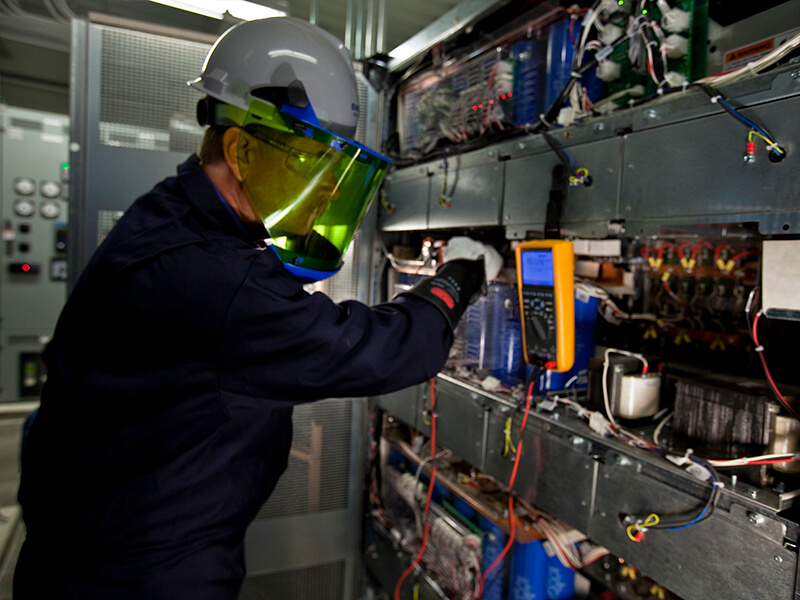We have addressed many facets of modular and prefabricated construction for data centers on this blog, including my last post on micro and edge data centers. Modular are often touted as providing a better, faster, and less costly way to deploy capacity. With this post, I want to explore the ‘better’ aspect of this approach.
Data Center Complexity and the Shrinking Workforce
The global demand for new data center space continues to accelerate and that trend is expected to hold for the next five or more years. The market drivers and societal trends of digital everything, everywhere, anytime, combined with upward economic mobility and the global shift in the workforce from skilled crafts and trades to knowledge-based, Internet/e-commerce-centric, are placing diametrically opposing forces upon the data center community.
Just when we need to design, build, deploy, and operate more complex mission-critical infrastructure, we find there is an ever-shrinking pool of skilled, experienced, and properly trained talent. The data center construction industry is further challenged by its regional nature, inability to forecast demand and location, not to mention the somewhat dyslexic nature of its start-stop-pause-restart mode of operation. Highly skilled labor pools are already stretched thin and market inconsistencies send them off to work in the next hot market. This has led to a decline in data center initial quality, increased costs for fit-out, rework, and commissioning, while also creating management uncertainty for multi-phased projects final TCO.
Prefabricated Critical Infrastructures to the Rescue
Fortunately, there is some good news! The data center industry has been following the lead of the telecom, datacom, and oil & gas industries and building upon their learnings in optimizing building designs for modular and prefabricated construction techniques. We are applying those techniques, along with many clever innovations, to design and build enterprise, colocation, and hyperscale data centers. These are being deployed around the globe with cost, schedule, and, perhaps most importantly, quality that are second to none.
Data center quality comes in many forms with the simplest being the initial quality assessment made on day one – the day the Prime/General Contractor says the building is ready for final inspection. That is when your team enters, completes an extensive audit, and usually leaves with an extensive punch list of items requiring immediate correction. Sometimes the findings are far worse.
Quality also includes less obvious factors, such as the scope of items included within the building as part of the day-one turnover. For example, with modular and prefabricated approaches the data center can be factory outfitted with all overhead (or underfloor) power and fiber distribution in place. Cable trays, lighting, fire suppression, security, access control, hot and cold aisles, even IT and IDF racks can be incorporated as part of the day-one scope. In fact, I have had the pleasure of walking several prefab data centers during fiber light-up tests at the factory production site.
Traditional vs. Prefabricated Data Center Quality
Let’s examine some of the basic drivers impacting ‘traditional’ critical infrastructures and the advantages inherent (at least when properly executed) with factory-built, prefabricated systems and on-site assembly.
As much as I enjoy seeing a new construction process launching, wherever it may be, the simple fact of the matter is skilled trades people are getting harder to find. And in the US, where the economy is booming, the new tax laws strongly favor local development, and the civil infrastructure (in some areas) is due for upgrade, the labor pool is stretched beyond capacity.
The result is a lack of consistency in the overall capability of the labor force, placing more burden on the design, sub-system suppliers, sub-contractors, on-site project managers, and a huge requirement on the robustness of the on-going safety and quality inspection systems. Sadly, many projects rely upon the final inspection, testing, and commissioning steps to identify site-specific shortcomings with enough time and money in the budget to effect proper corrective actions and remediation. The use of a 10-page punch-list is not an ideal path to a high-quality building.
For many multi-megawatt data center projects, keeping a consistent, reliable construction crew on hand throughout the duration of the project can be a challenge. Worse, when the project is multi-phased, the fit, finish, and quality of the core shell may have significant, albeit manageable, variations.
The same cannot be said for the mission critical, production white space. Whenever we resort to using local, manual / trade labor, the quality, fit finish, and physical layout of items fabricated on-site— overhead cable trays, busways, power cables, fiber runs, etc—can vary widely. Sometimes to the point where future build-outs do not function properly with the existing installed base.
All of which leads to excessive rework and work-arounds.
Fortunately, we have eliminated most, if not all, of these issues with the advent of the prefabricated data center manufacturing and installation building technique.
With factory-built, modular data centers the complete site is engineered on day one for the project’s final state. So, if you’re building a 50MW site but only deploying 5MW on the first phase, the design, component lists, manufacturing, and assembly drawings, along with the associated test procedures and quality inspection protocols, are all documented to ensure remaining 5MW blocks are identical. They are built in the same factory with identical tools, jigs, fabrication practices, manufacturing processes, quality controls, and test procedures.
Conclusion
What Henry Ford did for the automobile industry with the Model T and assembly line production, we are now applying to the construction industry with data centers, cable landing stations, base stations, control rooms, and other mission-critical facilities.
Quality improvement – perhaps the best kept secret of the prefabricated data center.






